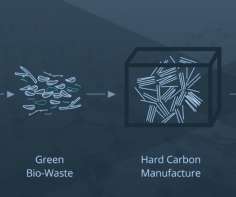Sparc Technologies, QUT partner to develop a hard carbon anode material from bio-waste for Na-ion batteries
Green Car Congress
SEPTEMBER 13, 2022
The Strategic Partnership Agreement is an umbrella agreement that will support a long-term partnership and commitment between the parties, affording Sparc the first right of refusal to commercialize technologies developed from projects Sparc undertakes with QUT. CATL launched its first-generation sodium-ion battery in 2021.



















Let's personalize your content